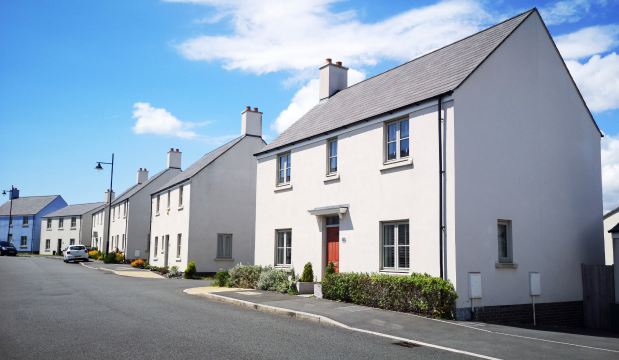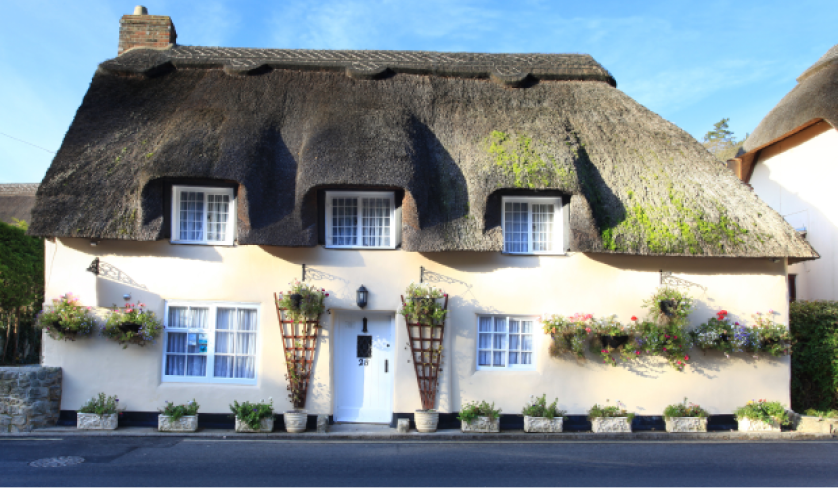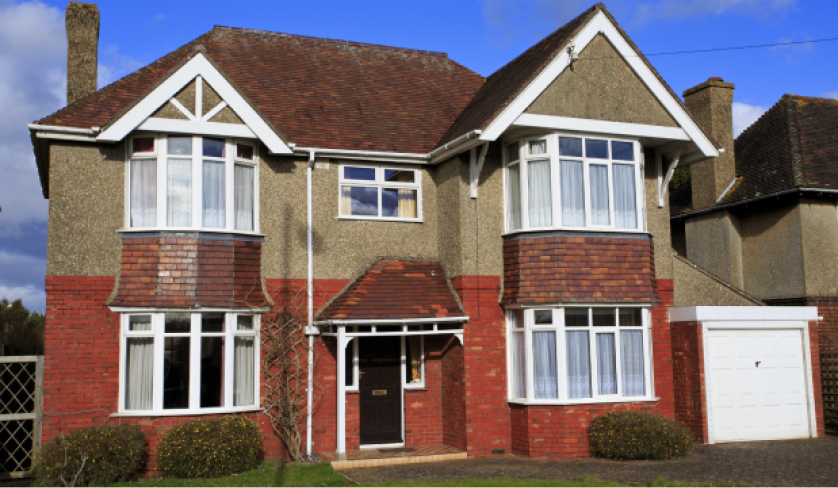Guides for Drylining
What is Render?
Rendering is the process by which a covering is applied to the external surface of a building.

Contents
What is Rendering?
Over time and with constant bombardment from the elements, bricks and mortar may become damaged, losing their aesthetic charm and compromising the structural integrity of the building. Often, this will result in the house needing to be repointed, which means renewing the integrity of the mortar. Rendering is a great way to prevent this damage from ever happening, reducing the need to repointed.
You’ll also see many new builds with attractive and sometimes colourful renders as it is a common aesthetic choice.
Cement Render
In the past, cement render was made up of three components: sand, cement and lime. The lime gave the render some added elasticity. Nowadays, the lime will usually be replaced with a plasticiser or waterproofer. Cement render has been used for many years to enhance the outside appearance of buildings and improve weather resistance. This type of render dries grey but can be painted over once dry. Cement rendering is pretty cost-effective. However, it is only really suitable for use on brick, and it is much less durable than silicone, which has excellent crack resistance.
Lime Render
Lime render has a costlier price tag than cement as it can be great for allowing a property to breathe, regulating moisture and preventing damp with its hygroscopic properties. Lime can be observed on pre-20th-century buildings with more traditional architecture, a testament to how long it can last.

Silicone Render
Silicone render is hydrophobic. A hydrophobic finish will reduce the amount of water absorbed into the surface and reduce the chance of algae growth. It is ideal for properties that need to breathe because it allows water vapour to escape. Silicone render lasts longer than cement and other renders so it is worth investing in.
K-Rends Silicone Scratch Coat Render is a popular choice for modern refurbishments because it comes with all the benefits of silicone and it does not require masonry paint, you can tint it before application. This makes it cheaper than sand and cement render which would have the added cost of scaffolding and labour for the masonry painting. Scratch coat render also doesn’t need to be repainted every 5-10 years and it is coloured throughout, meaning if it chips it’s still the same colour!
A scratch coat system involves a base layer, such as HP12, HP14 or HPX and a top coat, like K-Rend K1 Silicone Scraped Topcoat. Once dry, 2mm of the top coat is scraped off.
Another type of silicone render is a thin coat render system. This involves a base coat like those listed above and then a coat of Primer TC. You can apply this with a paint roller. Once this is all dry, you can go ahead and apply a coat of the thin coat render, K-Rend TC15. This process does not require any scraping. A thin coat render is ideal for use on EWI (external wall insulation).
![]()
Monocouche Render
Monocouche, French for one coat, is a more advanced option for rendering your home. It is super durable and easy to apply, plus you can add pigment prior to mixing, meaning you don’t have to paint the house afterwards. It is more cost-effective than silicone render but it does not have as long a lifespan.
Pebble Dash
Pebble dash involves covering the surface of a building with small pebbles and stones. It is an incredibly hard-wearing render and is best suited for areas with harsh weather conditions, like windy beach towns. Pebble dash is now considered a dated aesthetic choice but with its durability and cost-effectiveness, it might be just what you need to protect your masonry. However, it is worth noting that pebble dash has a very high density compared to other renders, which can affect breathability.

How Much to Render a House?
Determining the cost of a rendering project can be tricky, with a bunch of factors to consider. For example, the type of render, how much surface area will need to be covered and the actual stages involved in the process, like scaffolding the building, removing the original render and surface preparation, are all elements that will add to the overall project price. Before deciding, get a few quotes from different contractors.
Silicone render is a premium choice due to its easy application and crack resistance. According to Proguard Exteriors, you can expect to pay between £30 and £100 per square metre. Once other services are factored in, like permits, scaffolding and waste removal, the average cost of rendering a 4-bed detached house can rise to £8000.
The K-Rend Tinting Machine at Builder Depot
Builder Depot is now one of the only builder's merchants in the south of England to have a K-Rend render tinting machine. This means you can buy your silicone thin coat render and have it colour mixed in store on the same day. Take a look at the K-Rend colour simulator for an idea of the available colours and visit us in-store to find out more.
